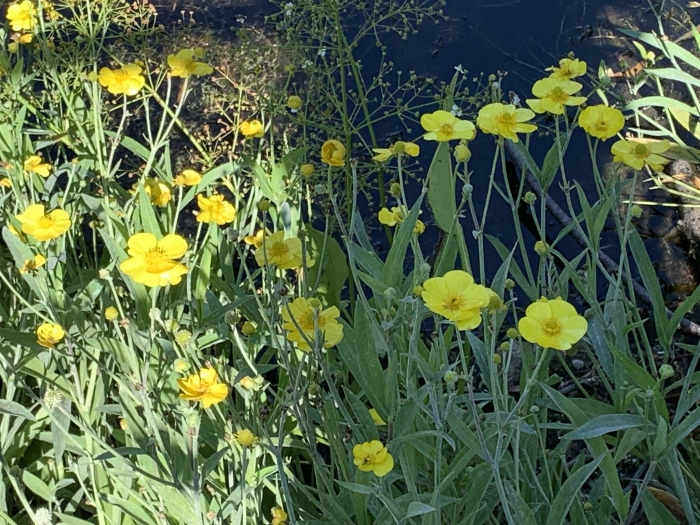Greater Spearwort
(Ranunculus lingua)
Greater Spearwort (Ranunculus lingua)
/
/

Katrin Simon
CC BY 4.0
Image By:
Katrin Simon
Recorded By:
Copyright:
CC BY 4.0
Copyright Notice:
Photo by: Katrin Simon | License Type: CC BY 4.0 | License URL: http://creativecommons.org/licenses/by/4.0/ | Rights Holder: Katrin Simon | Publisher: iNaturalist | Date Created: 2022-08-10T13:45:27Z |

























Estimated Native Range
Summary
Ranunculus lingua, commonly known as Greater Spearwort, is a semi-aquatic perennial herb native to marshes, fens, and the edges of ponds and streams across Europe, Siberia, and the western Himalayas. It thrives in shallow water or boggy conditions, typically in about 16 inches of water. Greater Spearwort can reach a height of 2 to 3 feet (60 to 90 cm) and is characterized by its lance-shaped leaves and bright yellow, buttercup-like flowers that bloom in the summer months. The flowers are quite showy and can add a splash of color to water gardens or wetland plantings.
Greater Spearwort is valued for its ornamental flowers and its ability to thrive in wet conditions, making it suitable for water gardens, bog gardens, and naturalized wetland areas. It is also used for stabilizing the soil in riparian zones. In cultivation, it requires consistently moist or wet soil and full sun to part shade. While it is not particularly demanding in terms of soil fertility, it does not tolerate drought. Care should be taken when planting Greater Spearwort as it can be potentially invasive outside its native range, spreading aggressively in suitable conditions.CC BY-SA 4.0
Greater Spearwort is valued for its ornamental flowers and its ability to thrive in wet conditions, making it suitable for water gardens, bog gardens, and naturalized wetland areas. It is also used for stabilizing the soil in riparian zones. In cultivation, it requires consistently moist or wet soil and full sun to part shade. While it is not particularly demanding in terms of soil fertility, it does not tolerate drought. Care should be taken when planting Greater Spearwort as it can be potentially invasive outside its native range, spreading aggressively in suitable conditions.CC BY-SA 4.0
Plant Description
- Plant Type: Herb
- Height: 2-5 feet
- Width: 1.5-2 feet
- Growth Rate: Moderate
- Flower Color: Yellow
- Flowering Season: Summer
- Leaf Retention: Deciduous
Growth Requirements
- Sun: Full Sun, Part Shade
- Water: High
- Drainage: Standing, Slow, Medium
Common Uses
Water Garden
Natural Habitat
Marshes, fens, and the edges of ponds and streams across Europe, Siberia, and the western Himalayas
Other Names
Common Names: Zungen-Hahnenfuß, Large Spearwort
Scientific Names: , Ranunculus lingua, Flammula lingua, Ranunculus lingua f. angustifolius, Ranunculus lingua f. diminutus, Ranunculus lingua f. hirsutus, Ranunculus lingua f. integerrimus, Ranunculus lingua f. latifolius, Ranunculus lingua f. parviflorus, Ranunculus lingua f. parviflorus
GBIF Accepted Name: